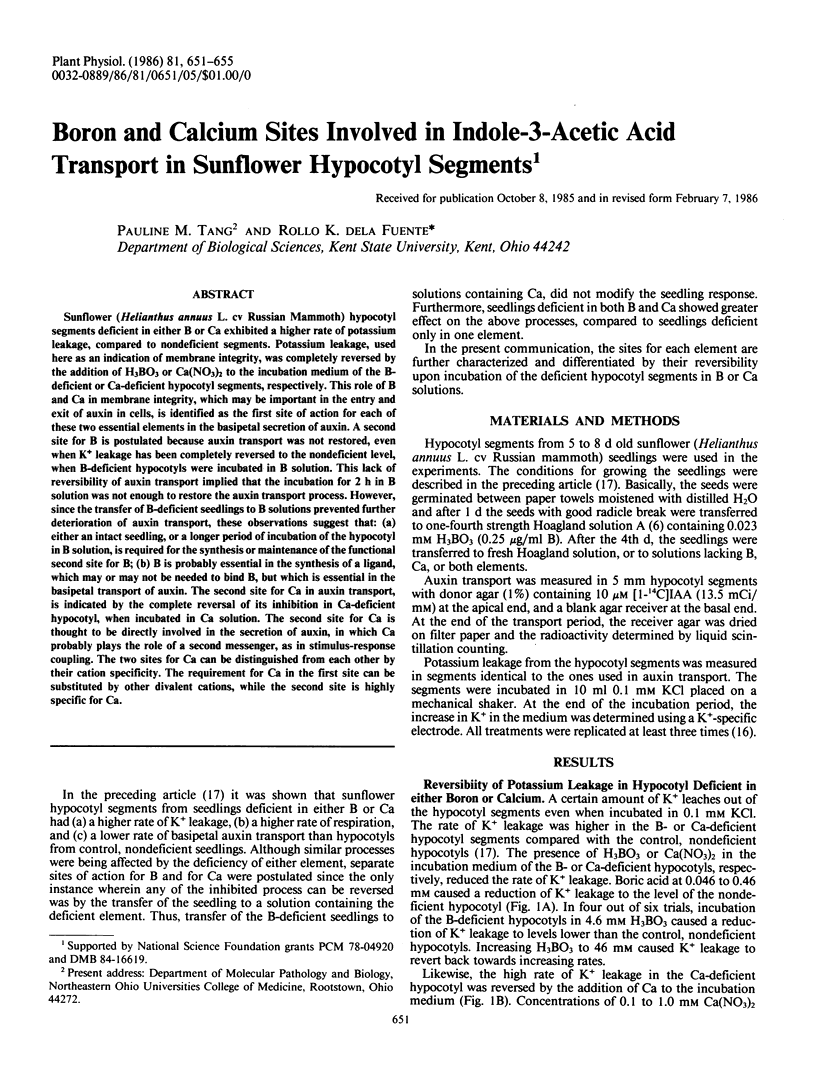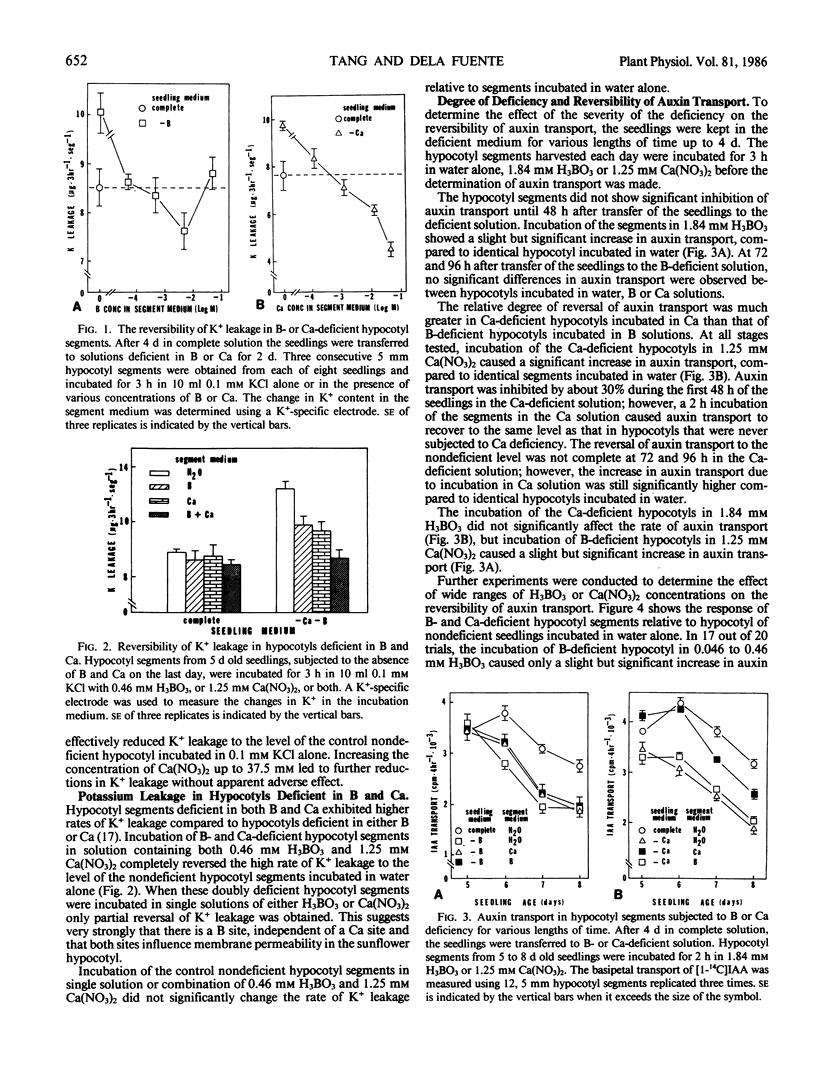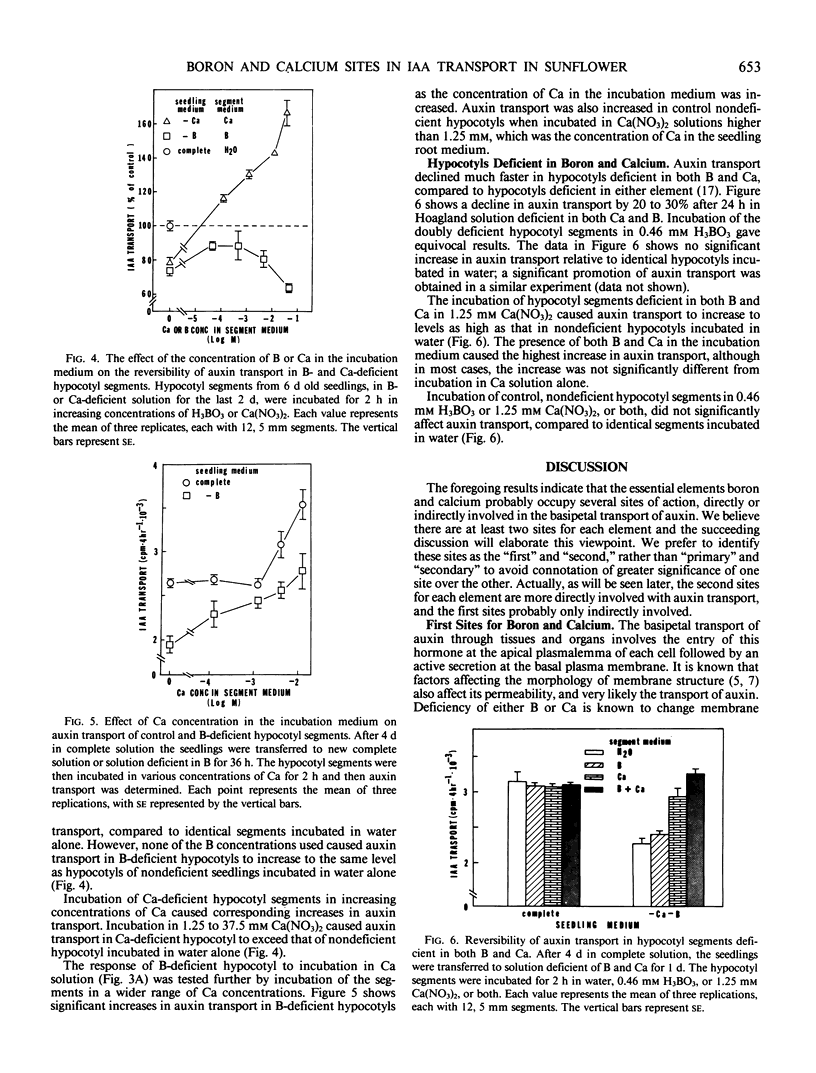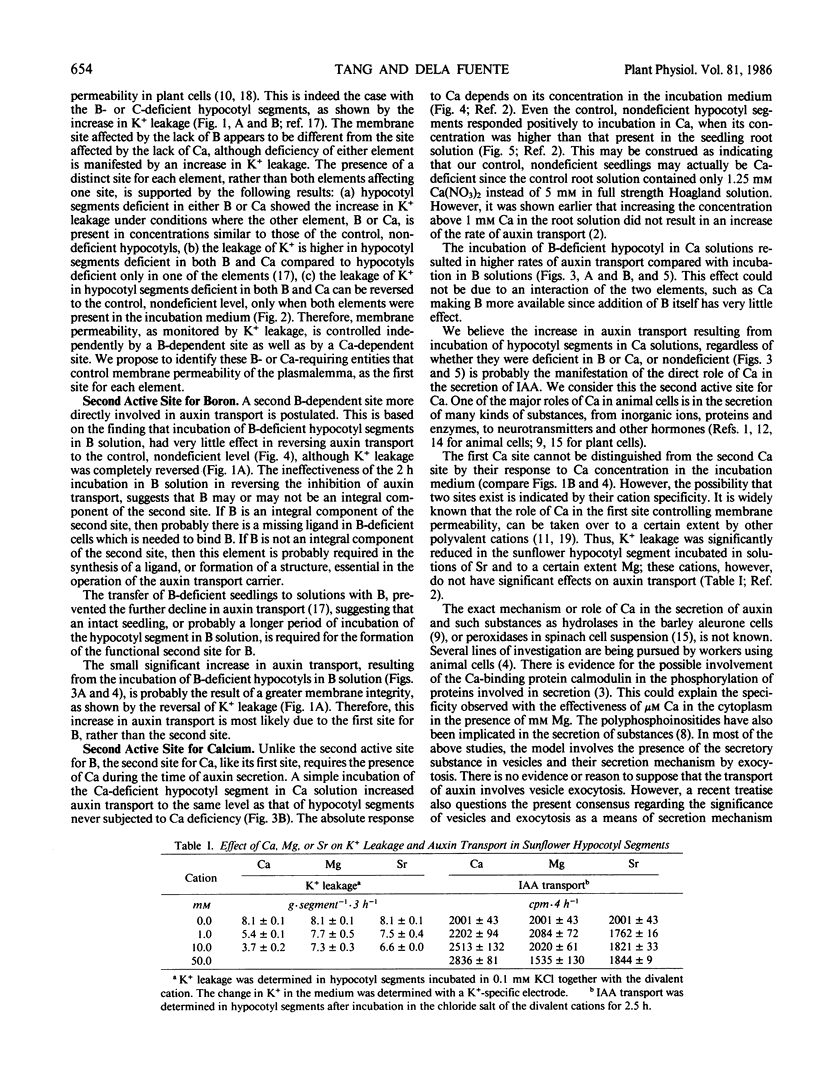Abstract
Sunflower (Helianthus annuus L. cv Russian Mammoth) hypocotyl segments deficient in either B or Ca exhibited a higher rate of potassium leakage, compared to nondeficient segments. Potassium leakage, used here as an indication of membrane integrity, was completely reversed by the addition of H3BO3 or Ca(NO3)2 to the incubation medium of the B-deficient or Ca-deficient hypocotyl segments, respectively. This role of B and Ca in membrane integrity, which may be important in the entry and exit of auxin in cells, is identified as the first site of action for each of these two essential elements in the basipetal secretion of auxin. A second site for B is postulated because auxin transport was not restored, even when K+ leakage has been completely reversed to the nondeficient level, when B-deficient hypocotyls were incubated in B solution. This lack of reversibility of auxin transport implied that the incubation for 2 h in B solution was not enough to restore the auxin transport process. However, since the transfer of B-deficient seedlings to B solutions prevented further deterioration of auxin transport, these observations suggest that: (a) either an intact seedling, or a longer period of incubation of the hypocotyl in B solution, is required for the synthesis or maintenance of the functional second site for B; (b) B is probably essential in the synthesis of a ligand, which may or may not be needed to bind B, but which is essential in the basipetal transport of auxin. The second site for Ca in auxin transport, is indicated by the complete reversal of its inhibition in Ca-deficient hypocotyl, when incubated in Ca solution. The second site for Ca is thought to be directly involved in the secretion of auxin, in which Ca probably plays the role of a second messenger, as in stimulus-response coupling. The two sites for Ca can be distinguished from each other by their cation specificity. The requirement for Ca in the first site can be substituted by other divalent cations, while the second site is highly specific for Ca.
Full text
PDF




Selected References
These references are in PubMed. This may not be the complete list of references from this article.
- DeLorenzo R. J., Freedman S. D., Yohe W. B., Maurer S. C. Stimulation of Ca2+-dependent neurotransmitter release and presynaptic nerve terminal protein phosphorylation by calmodulin and a calmodulin-like protein isolated from synaptic vesicles. Proc Natl Acad Sci U S A. 1979 Apr;76(4):1838–1842. doi: 10.1073/pnas.76.4.1838. [DOI] [PMC free article] [PubMed] [Google Scholar]
- Dela Fuente R. K. Role of calcium in the polar secretion of indoleacetic Acid. Plant Physiol. 1984 Oct;76(2):342–346. doi: 10.1104/pp.76.2.342. [DOI] [PMC free article] [PubMed] [Google Scholar]
- Douglas W. W. Aspects of the calcium hypothesis of stimulus-secretion coupling: electrical activity in adenohypophyseal cells, and membrane retrieval after exocytosis. Methods Cell Biol. 1981;23:483–501. doi: 10.1016/s0091-679x(08)61515-0. [DOI] [PubMed] [Google Scholar]
- Marx J. L. The polyphosphoinositides revisited. Science. 1985 Apr 19;228(4697):312–313. doi: 10.1126/science.2984769. [DOI] [PubMed] [Google Scholar]
- Moll B. A., Jones R. L. Alpha-amylase secretion by single barley aleurone layers. Plant Physiol. 1982 Oct;70(4):1149–1155. doi: 10.1104/pp.70.4.1149. [DOI] [PMC free article] [PubMed] [Google Scholar]
- Poovaiah B. W., Leopold A. C. Effects of inorganic salts on tissue permeability. Plant Physiol. 1976 Aug;58(2):182–185. doi: 10.1104/pp.58.2.182. [DOI] [PMC free article] [PubMed] [Google Scholar]
- Sticher L., Penel C., Greppin H. Calcium requirement for the secretion of peroxidases by plant cell suspensions. J Cell Sci. 1981 Apr;48:345–353. doi: 10.1242/jcs.48.1.345. [DOI] [PubMed] [Google Scholar]
- Tang P. M., Dela Fuente R. K. The transport of indole-3-acetic Acid in boron- and calcium-deficient sunflower hypocotyl segments. Plant Physiol. 1986 Jun;81(2):646–650. doi: 10.1104/pp.81.2.646. [DOI] [PMC free article] [PubMed] [Google Scholar]


